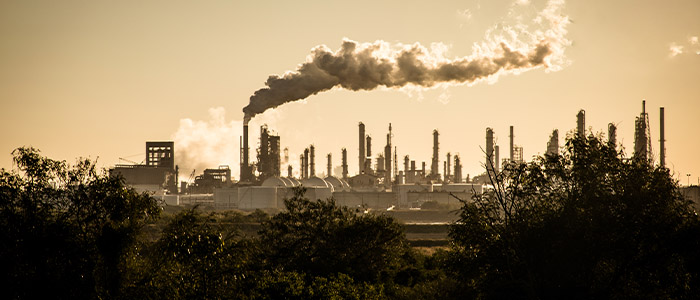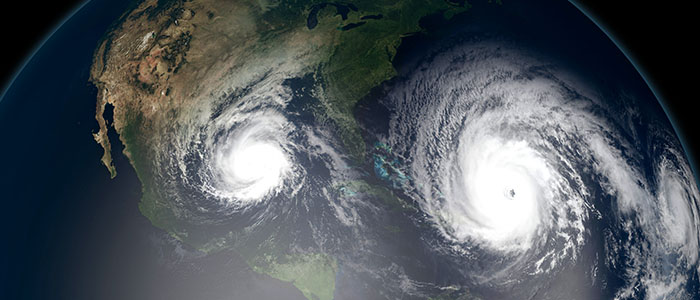Premier Point Home Health
- Phone: 773.275.8390
- 800.526.0844 / TTY
- 800.526.0857 / Voice
- 711 Telecommunication Relay Service (TRS)
For interpretation services, please call our main number
.png)
Climate Change and Its Effect on Your Health
Stephanie Griffin |
The concentration of carbon dioxide in our atmosphere is the highest it has been in 3 million years. According to NASA and NOAA data, 17 of the 18 warmest years on record have occurred after the year 2000. Climate change is one of the world’s biggest obstacles when it comes to long-term health. The effects of natural disasters, wildfires, and extreme heat are the most immediate and noticeable – but our overall health is greatly impacted by climate change in ways that we may not even notice – like decreased air quality and lower nutritional value in the food we consume.

AIR QUALITY
Climate change increases ground-level ozone, which contributes to smog. High levels of smog can lead to diminished lung function, and can add to asthma complications, including increased hospital admissions and even premature death.

MOLD
Long periods of rainfall or extreme storms can lead to growth of fungi or mold in the home. Exposure to mold can cause increased nasal stuffiness, throat irritation, coughing or wheezing, eye irritation, or skin irritation. For those who are already suffering from a chronic lung illness or are otherwise immune-compromised, serious lung infections could develop, which could even be fatal.
INFECTIOUS DISEASE
Infectious disease spread can be affected by climate change. Transmission of infectious diseases is sensitive to changes in the weather and changes to the landscape, as that can affect the amount of fleas, ticks, mosquitos, and other pathogen-spreading insects in a given area. Long term climate variability, along with daily or seasonal changes, can shift the expansion of flea, tick, and mosquito populations in their geographic ranges. This can lead to an increase in Lyme disease, West Nile virus, and other pathogen-borne diseases. Additionally, exposure to pathogens in food and water can cause diarrheal disease, with children and the elderly most vulnerable.
HEAT STROKE
As the concentration of greenhouse gases rises, we also see an increase in average temperatures, and sometimes extreme heat waves. When we experience heat our body isn’t accustomed to, especially over a period of days or weeks, our body’s ability to regulate our internal temperature is compromised. This loss of internal temperature control can lead to heat exhaustion and heat stroke, and can worsen chronic conditions such as cardiovascular disease, respiratory disease, and diabetes-related complications. Low income and elderly persons are most likely to be affected by extreme heat waves, due to lack of air conditioning or lack of mobility. In 1995, Chicago experienced a record-breaking heat wave over a week-long period in July, leading to 739 heat-related deaths. The majority of these victims were elderly persons living in poverty, who either did not have air conditioning or could not afford to turn it on, and were afraid to open their windows due to crime.

FOOD SECURITY
Due to increased ease of transportation over the past century, in addition to new technologies being used in food processing and packaging, agriculture has been condensed to specific areas – because crops can be shipped worldwide with ease. Therefore, if severe storms, frost, or flooding occurs in an area with high agriculture production, it can have a global impact on food supply. Even outside of severe weather conditions, overall changing weather patterns mean increased occurrences of crops failing and declining yields.
Climate change affects both food availability and accessibility. Low income people, particularly those living in urban areas, will be the most affected by food insecurity. People living in urban areas may not have access to full-service supermarkets and grocery stores, and may only have convenience stores or gas stations to obtain food. Predominantly black and Hispanic neighborhoods are more likely to be “food deserts” (i.e., areas without supermarkets or grocery stores) than predominantly white neighborhoods. This means that food for these communities will be lesser in nutritional value, more costly, and with lesser variety. As climate change leads to higher transportation costs, increased food costs, and increased transportation complications, issues accessing fresh and healthy food in these communities will only get worse. Climate change not only affects access to food, but also affects the nutritional value in our food. As atmospheric CO2 becomes elevated as the climate shifts, which results in lower amount of protein in some crops, such as barley and soy. Declining CO2 is also associated with decreased nitrogen concentration, which means crops will have lower amounts of calcium, iron, zinc, and other nutrients.

MENTAL HEALTH
Distress caused by thinking about the implications of climate change, in addition to stressors caused by extreme weather conditions, can take a toll on one’s mental health. Loss of one’s home due to severe storms, sea level rise, or wildfire can cause depression, grief, and an intense sense of loss that sometimes leads to post-traumatic stress disorder or substance abuse.
Those who have pre-existing mental illness, children, pregnant and postpartum women, homeless persons, and first responders are at higher risk for mental health consequences from climate change. Many psychoactive prescription medications impair the body’s ability to regulate temperature, and persons taking these medications can suffer both physical and mental complications when in extreme heat, including a higher risk of disease and death.

EFFECT OF EXTREME WEATHER ON HOMEBOUND SENIORS
There’s no way to fully prepare for a full-blown natural disaster. Homebound seniors suffer the hardest from extreme weather, particularly those who live alone at home. During an extreme storm, basic services like water, gas, electricity, and phone lines can get shut off – in some circumstances, for weeks following a storm.
Help may not come right away – local officials and relief workers may be overwhelmed following a natural disaster. Taking preparedness measures ahead of time can be life-saving for the homebound senior.Having a disaster supply kit packed and ready in your home will be advantageous if you are home without basic services or if you need to quickly evacuate. Your evacuation kit should include your identification and list of medications as well as at least a one-week supply of your medications. Equipment such as wheelchairs or walkers should be labeled with your name and phone number in case you are evacuated to a shelter. You may want to keep your kit in a bag that has wheels so it is easy to transport.
At home, preparedness should include a supply of non-perishable food items, blankets, bottled water, a flashlight with extra batteries and bulbs, a battery-operated radio, a whistle (to call attention to emergency responders), and maps. Planning ahead can reduce anxiety when disaster strikes. Speak with your family, friends, and support network over your emergency plan, and choose an out-of-town contact person in case of emergency (during natural disasters, local calls are sometimes more difficult than contacting someone outside the disaster zone). You should review and update your emergency preparedness plan every six months, and discuss the plan with your friends and family. This includes refreshing expired food and medications and changing batteries in all essential devices (smoke detectors, radios, etc.)
For interpretation services, please call our main number
.png)